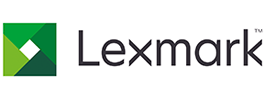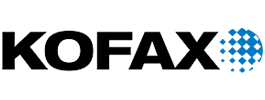Is your information disjointed and in need of enhancement?
Today’s hospitals and health systems run on information. Clinicians need it to make accurate diagnoses and improve patient outcomes, while finance departments needs it to secure and optimise reimbursement. HIM professionals need it to ensure compliance, and Operations needs it to enhance organisational performance and cut costs.
The good news is, as a healthcare provider, you’re information rich – the bad news is, much of this content is painfully disjointed and information resides outside core HIT applications throughout the healthcare organisation, meaning clinicians and staff rarely have the information they need at the moment they need it.
To ensure you have the information on hand to deliver true patient-centred care, you need a technology platform that can aggregate a variety of content stored in multiple systems throughout the enterprise and present it in a single, customised view, driving improvements in patient care and service, while improving medical data management and reducing operational costs.
As a Platinum Partner with Kofax and a partner of DocuWare, and OnBase by Hyland, Twofold Ltd is uniquely placed to help you.
Contact for more information
Case Study Electronic Health Records

Inselspital, a university hospital in the Swiss healthcare system, processes more than 150,000 invoices per year—and that number is trending upward. The hospital implemented Kofax technology because it was a seeking a solution that added speed to admissions and record processing and allowed for the expansion of automation.
Challenge
The players in the Swiss healthcare system are under considerable cost pressure. Today, most inpatients are billed using so-called flat rates—services are standardised to the greatest extent possible. There is no compromise when it comes to medical treatment and care, and for that reason, managers try to make hospital administration as efficient as possible. The two most important controls for adjusting administrative efficiency are operational organisation and the use of modern tools—in other words, IT. The torrent of paper in a large organisation like Inselspital consumes an enormous quantity of resources. Processing and filing duties occupy a major part of the administrative staff’s time. The IT infrastructure at Inselspital can be divided into two categories. One consists of systems that relate to patients— for example, a clinic-wide hospital information system (HIS) and an archive of case histories. The other is an SAP-based environment for administration and accounting. The system environment operation is outsourced to T-Systems Schweiz; some of the individual clinics have their own systems. An example of this is the radiology department, which uses a great many medical devices that require their own IT. Imaging services (e.g., X-ray, CT, MRI) are especially worth mentioning. Since 2009, Inselspital has used electronic patient histories. Digitization occurs for all documents generated by HIS, letters of referral from primary care physicians, reports from referring offices, etc. At the same time, paper-based patient records continue to be converted into an electronic archive.
Solution
Christoph Pauli, ECM team leader in the IT department, helped define the project goal for the hospital. “We wanted to address two challenges simultaneously with a uniform scanning strategy: to optimize processes by digitizing documents and to scan in our archive, consisting of kilometers of medical records,” he said. “Kofax’s integrated approach quickly convinced us.” Kofax technology allowed Inselspital to phase out two organisationally separate scanning sites in favour of a single Kofax Capture™ implementation, which likewise will be hosted by the outsourcing service provider, T-Systems. Kodak scanners are deployed throughout the environment, and with these scanners, all the parameters important to the scanning process can be entered directly through a control panel. For patient-related systems, a central scanning site serves as the linchpin for digitizing internal documents. Staff personnel continue to capture archived patient records, in addition to current results and additional documents for EPR. “New documents always have priority,” Pauli said. “The project is designed so employees always retrieve records to scan whenever they have the capacity to do so.” In addition to the central scanning site, there are still some individual decentralized scanning stations. One is located in patient admissions where, due to emergencies and normal admissions procedures, documents like copies of IDs or referrals must be captured immediately. A second central scanning infrastructure covers the SAP realm. Incoming invoices are captured at two scanning stations and automatically classified with the help of Kofax Transformation™. Invoices are captured by the system ahead of time and each receipt gets a unique barcode for tracking. The receipts are forwarded to a downstream workflow system—in this case, Open Text MBPM, previously known as Metastorm. Staff in accounting assign them to cost centers, triggering the next steps in invoice processing.
Results
“We are very satisfied with Kofax,” Pauli said. “The environment is powerful, very flexible and stable. That is extremely important to us because capturing documents is critical to our business and simply must work.” He also said the hospital appreciates being are able to use one server installation in various operational realms. “Furthermore, the licensing model is quite transparent and flexible,” Pauli said. Each year, accounting must process about 150,000 incoming invoices and the trend is upward. Areas such as the kitchen or building services are among the big recipients of invoices, just behind the central warehouse and procurement of materials. Human Resources also uses the scanning infrastructure to electronically capture job applications and other documents for employees’ personnel files. An ongoing merger project—Inselspital’s integration with Bern’s hospital network—will result in the consolidation of archives and significantly increase scanning capacity. However, the capacity freed when the archive is digitized won’t be dismantled; instead, it will be used for the expansion of scanning activities. “In the foreseeable future, we want to establish a central, digital mailroom and make more use of electronic interoffice mail,” Pauli said. “Beyond that, we want to increase the level of automation in the accounts payable department, as we read more billing information with Transformation Modules and pass it along to SAP.” Additionally, another step to be taken is the establishment of a Kofax test environment. With this “playground” for developers, Pauli said the introduction of new functions and services will happen significantly faster, be easier and have less risk.
Some of our customers in the healthcare industry






How we help
Accreditations & Partners







